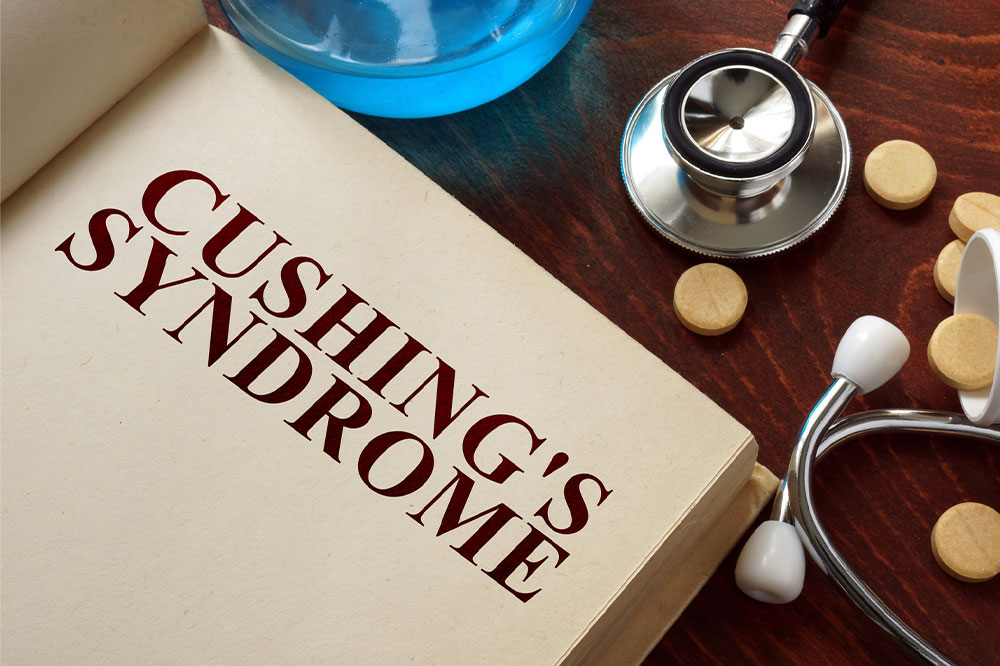Cushing’s Disease in Dogs – Symptoms, Diagnosis, and Management
Cushing’s disease, also called Cushing’s syndrome, results from the overproduction of the cortisol hormone by the adrenal glands located near the kidneys. While cortisol plays a critical role in regulating bodily functions, overproduction or decreased production can be life-threatening. Since Cushing’s can also affect dogs, pet parents must look for the signs and consult a veterinary doctor at the earliest. Continue reading to know more about Cushing’s disease in dogs.

Signs and symptoms
Usually, the symptoms that occur are common in many health conditions affecting pets, making Cushing’s disease challenging to diagnose. Nevertheless, one can see an expert if their dog experiences the following discomforts:
Excessive panting
Panting is a typical response in dogs after a long walk or any form of exertion. It can also occur when they feel hot. However, if the panting occurs more frequently and is excessive, it could indicate Cushing’s disease. If panting is accompanied by other symptoms, one must not delay taking their pet to a veterinarian for a check-up.
Increased thirst and urination
Increased thirst and urination are usually among the first signs. Even well-trained dogs may relieve themselves inside the house, leading to a foul odor and an increased risk of ailments in humans who share the space. Instead of mistaking the symptom for urinary tract and kidney issues, pet parents must consult a vet for an early diagnosis of the underlying condition.
A pot belly
Due to high cortisol levels, pets may develop a bigger appetite. This symptom can be accompanied by a pot-bellied appearance, often caused by bloating of the dog’s liver and relaxation of its abdominal ligaments. A belly bulge can sometimes be mistaken for illnesses like ascites (water accumulation in the abdomen). In such cases, the healthcare professional may feel the dog’s abdomen to detect signs of liver enlargement. An ultrasound may also be recommended to spot a tumor on the adrenal glands.
Thin skin
Although dogs can vary in shape, size, and breed, one thing remains common among them all: the plumpness of their skin. But when dogs have Cushing’s, their skin can feel thin to the touch, especially near the flank (the portion between the end of their chest and rear leg). The symptom results from the disruption in skin cell growth triggered by elevated cortisol levels in the body. When looking for thin skin, dog owners must be wary of other issues, such as pigmentation, testicular atrophy, increased bruises, and slow-healing wounds.
Some other symptoms of Cushing’s disease in dogs are behavioral changes, hair thinning and loss, high blood pressure, and recurrence of infections. The condition develops gradually in most cases, and the signs vary from dog to dog.
Diagnostic procedures
As mentioned previously, diagnosing the disease is quite difficult. It entails multiple tests, including blood work and abdominal ultrasounds:
Blood tests
Through blood tests, the professional may look for subtle signs like elevated liver enzymes, high cholesterol levels, and decreased BUN (blood urea nitrogen) levels.
Abdominal ultrasound
Veterinarians use ultrasounds to asses different organs of the dog, such as the kidneys, liver, and adrenal glands, and keep an eye out for changes or abnormalities in them.
Besides these procedures, the expert may suggest diagnostic tests like an LDDST and ACTH stimulation test to understand the issue better. The procedure may vary depending on the nature of the symptoms exhibited by the pet and other factors.
Treatment and care
Cushing’s disease does not have a fixed treatment. The vet develops a management plan after considering the symptoms and discomforts the pet faces. Two common treatment approaches are surgery and radiation therapy. Let us take a closer look at the purpose and benefits of these options:
Surgery
The expert may suggest this treatment when they find abnormalities in the adrenal glands, such as tumors. In most cases, adrenal tumors can be completely removed surgically. Benign growths are more likely to be cured than growths that have advanced and spread. The situation can become complicated when dealing with tumors in the pituitary gland owing to its difficult location. Since Cushing’s causes slow healing in dogs, vets usually avoid surgery and try to achieve the best results with alternative treatments.
Radiation
Since tumors in the pituitary gland can be difficult to treat by surgery, vets opt for an alternative treatment: radiation. Radiation therapy has shown major improvement in neurological symptoms in dogs. Some early-diagnosed cases have even shown elimination of the symptoms, thus improving prognosis. In this therapy, doctors administer radiation to the tumor to shrink its size. The treatment is administered in several sessions over four to six weeks. While it is a valuable option, it may result in side effects like loss of pigment in the hair and skin around the treated region.
Cushing’s disease in dogs is severe and life-threatening, so one must consult a veterinarian instead of experimenting. Besides developing a treatment plan, the expert may recommend acupuncture, natural remedies, and special nutrition plans to care for dogs during this time.


